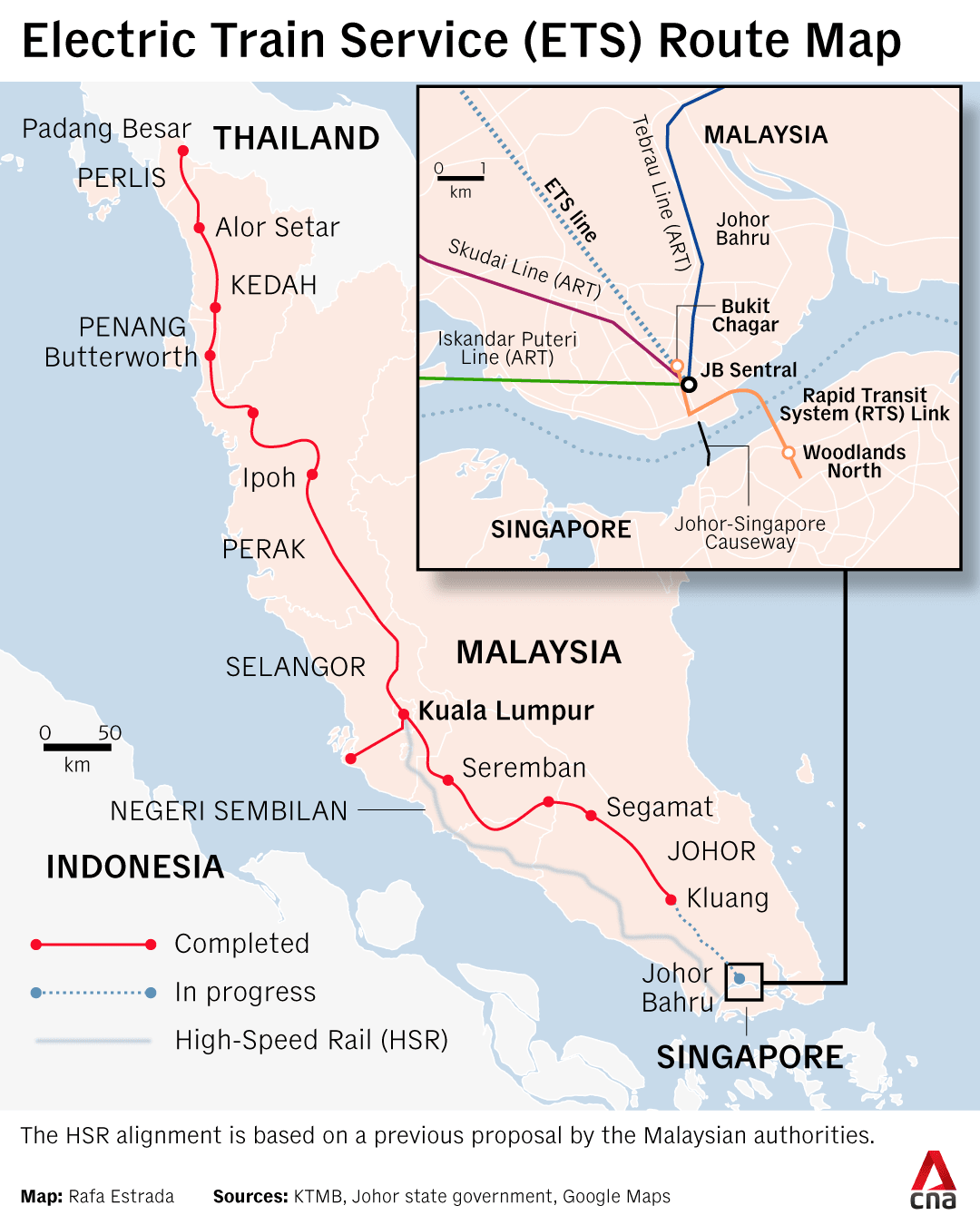Malaysia's new Electric Train Service to begin JB-KL route on Dec 12
Initial operations will focus primarily on connecting Johor Bahru to Kuala Lumpur, Malaysian Transport Minister Anthony Loke announced on Saturday (Nov 22).

An electric train service (ETS) carriage is seen at KL Sentral station in Kuala Lumpur on Aug 27, 2025. (Photo: CNA/Zamzahuri Abas)

This audio is generated by an AI tool.
KUALA LUMPUR: The long-awaited Electric Train Service (ETS) connecting Johor Baru and Kuala Lumpur will begin operations on Dec 12, Malaysian Transport Minister Anthony Loke announced on Saturday (Nov 22).
Initial operations will focus primarily on connecting Johor Bahru to Kuala Lumpur, Loke said, with “longer-distance routes to Padang Besar and Butterworth scheduled in subsequent phases”.
“For longer routes, the train can only make two trips a day - one up, one down,” Loke told reporters at the Kluang Rail Festival.
“Shorter sectors like Johor Bahru to Kuala Lumpur allow more frequent trips.”
He also encouraged passengers travelling to states in northern Malaysia to use transit connections to continue their journeys.
Malaysia's king Sultan Ibrahim Sultan Iskandar will launch the new ETS service in Johor Baru on Dec 11, a day before it opens to the public, Malaysian newspaper The Star reported on Saturday.
First announced back in 2011 by Malaysia’s national rail operator Keretapi Tanah Melayu Berhad (KTM), construction on the RM8.9 billion (US$2.14 billion) project began in 2016, covering the districts of Segamat, Kluang and Kulai and Johor Bahru.
It has seen significant delays, with travel experts citing how commuter confidence in the line’s reliability could erode.
The ETS service between Johor Bahru and Kuala Lumpur is expected to take between 3.5 and 4.5 hours, depending on the type of service the passenger takes - silver, gold, platinum or express.
Each has different numbers of stops and varying levels of comfort, newly appointed acting KTM chief executive officer Ahmad Nizam Mohamed Amin told CNA in an interview in September.
“In terms of cost, it is more economical compared to flying because we save on ticket prices,” he said, adding that it could “revolutionise” transport options in the peninsula and offer passengers a greener and potentially cost-effective way to travel between key cities.
“Compared to driving, we save time. Therefore, I believe it is an attractive choice for users to choose to travel by (ETS),” he added.

The ETS is expected to boost economies and businesses in smaller satellite towns such as Kluang along its route and will also benefit Malaysians travelling locally between key stops in the peninsula.
But transport experts previously told CNA that travellers from Singapore would benefit too.
Coupled with the expected completion of the Johor Bahru-Singapore Rapid Transit System (RTS) Link by the end of next year, those heading to Kuala Lumpur from Singapore, and vice versa, will be able to do so within four hours via rail, they said.
“By road, travellers might be forced to encounter traffic jams - both at the Causeway and on the highways in Malaysia. By using RTS and ETS trains, they can sit back and relax and not have to worry about congestion,” said Rosli Azad Khan, a transport planning expert who heads Selangor-based consultancy firm MDS.














